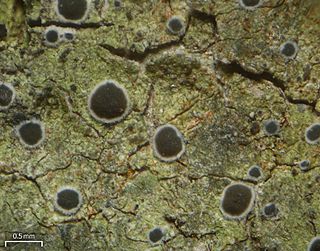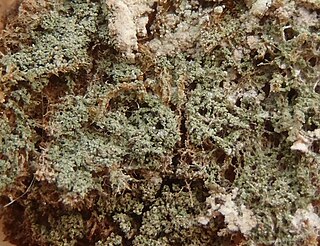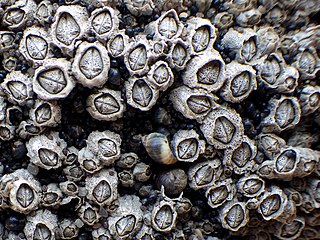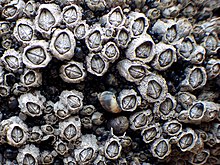
Byssoloma is a genus of leaf-dwelling lichens in the family Pilocarpaceae.

Micarea is a genus of lichen-forming fungi in the family Pilocarpaceae. The widely distributed genus contains 142 species and new species are described actively. Species in the genus are crustose lichens and their photobiont is a single-celled green alga.

Arthothelium is a genus of lichen-forming fungi in the family Arthoniaceae.

Mazosia is a genus of lichen-forming fungi in the family Roccellaceae.

Anisomeridium is a genus of lichens in the family Monoblastiaceae. The type species was originally named Arthopyrenia xylogena by Swiss botanist Johannes Müller Argoviensis in 1883; in 1928, Maurice Choisy defined the genus Anisomeridium, designating A. xylogena the type species.

Agonimia is a genus of lichen-forming fungi in the family Verrucariaceae.

Tylophoron is a genus of lichen-forming fungi in the family Arthoniaceae. It comprises seven species of crustose lichens, most of which occur in tropical regions.
Zwackhiomyces is a genus of lichenicolous (lichen-dwelling) fungi in the family Xanthopyreniaceae.

Porpidia is a genus of crustose lichens in the family Lecideaceae. Porpidia species primarily inhabit siliceous rocks, pebbles, and stonework, with rare occurrences on bark, wood, and compacted soil. The thallus, or body of the lichen, varies in appearance from thick and crusty to barely visible. It may form a continuous layer or develop cracks resulting in a segmented, areolate structure. The colour of the thallus ranges from grey and white to orange.
Synarthonia is a genus of lichen-forming fungi in the order Arthoniales. The genus has not been placed into a family.

Megalaria is a genus of lichen-forming fungi in the family Ramalinaceae. It contains 44 species of crustose lichens, the majority of which grow on bark.

Hydropunctaria is a genus of saxicolous (rock-dwelling), crustose lichens in the family Verrucariaceae. The genus includes both aquatic and amphibious species, with members that colonise either marine or freshwater habitats. The type species, Hydropunctaria maura, was formerly classified in the large genus Verrucaria. It is a widely distributed species common to littoral zones. Including the type species, five Hydropunctaria lichens are considered marine species: H. adriatica, H. amphibia, H. aractina, H. orae, and H. oceanica.
Schizotrema is a genus of lichen-forming fungi in the family Graphidaceae. The genus was circumscribed in 2009 by Armin Mangold and H. Thorsten Lumbsch.
Swinscowia is a genus of lichen-forming fungi in the family Strigulaceae. It has 34 species. Swinscowia was proposed in 2020 by lichenologists Shu-Hua Jiang, Robert Lücking, and Emmanuël Sérusiaux to contain non-foliicolous species that were isolated from bark and rocks. Swinscowia jamesii, a species that was originally described in genus Geisleria, and later transferred to Strigula, is the type species of the genus. The genus name honours British lichenologist Dougal Swinscow, who originally described the type species in 1967.
Leptogidium is a genus of lichen-forming fungi in the family Pannariaceae. It has six species.
Celothelium is a genus of lichen-forming fungi in the family Celotheliaceae. These lichens typically have a thin, crust-like thallus that often grows beneath the surface of tree bark or rocks in tropical rainforests and coastal areas. Celothelium species are characterised by small, black, shiny reproductive structures (perithecia), and thread-like spores. The genus has had an uncertain taxonomic history since its original description in 1860, but recent genetic studies have placed it in its own distinct group within the fungal class Eurotiomycetes. Celothelium species have been found in various parts of the world, including Asia, Europe, and the Americas.

Collemopsidium sublitorale is a species of lichen in the family Xanthopyreniaceae. First described in 1871, it forms a "borderline" symbiotic relationship with cyanobacteria that is less structured than typical lichen partnerships. The species is characterised by an immersed thallus and black, roughly spherical fruiting bodies measuring 0.15–0.55 mm in diameter. It grows in the intertidal and littoral fringe zones of marine environments, exclusively on calcareous substrates such as limestone and marine shells. Studies have documented its presence along both exposed and sheltered coastlines in northwest Europe, where it typically occurs in shaded positions lower in the tidal zone.

Collemopsidium foveolatum is a species of lichen in the family Xanthopyreniaceae. It is a marine lichen that grows entirely embedded within calcareous substrates in the intertidal zone, particularly on limestone rocks and marine shells. The species is characterised by its minute, black, sunken reproductive structures that measure 0.10–0.24 mm in diameter and create small pits in the substrate. First described in 1911 from specimens collected in England, it has since been documented along coastlines in western Europe, North America and North Africa. The species can be distinguished from similar marine lichens by its consistently small, deeply embedded perithecia and its ability to maintain stable growth by keeping pace with natural substrate erosion.













